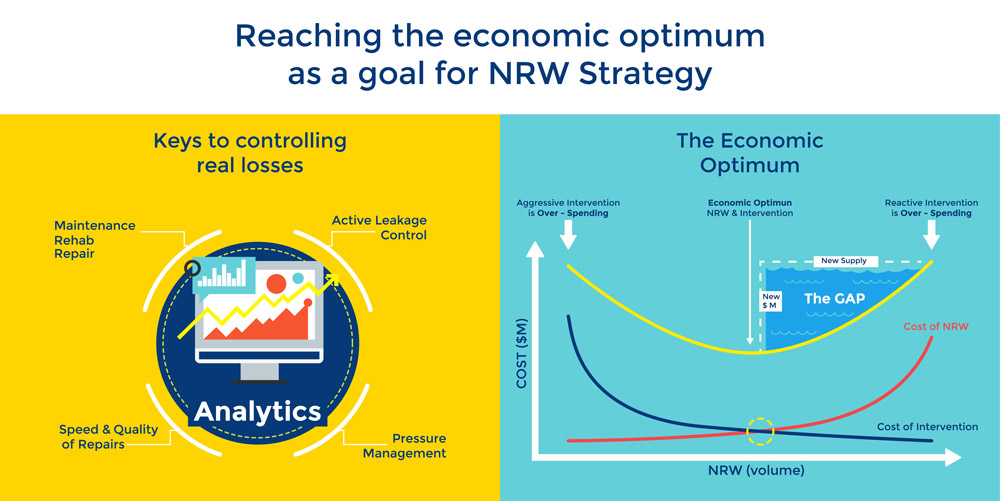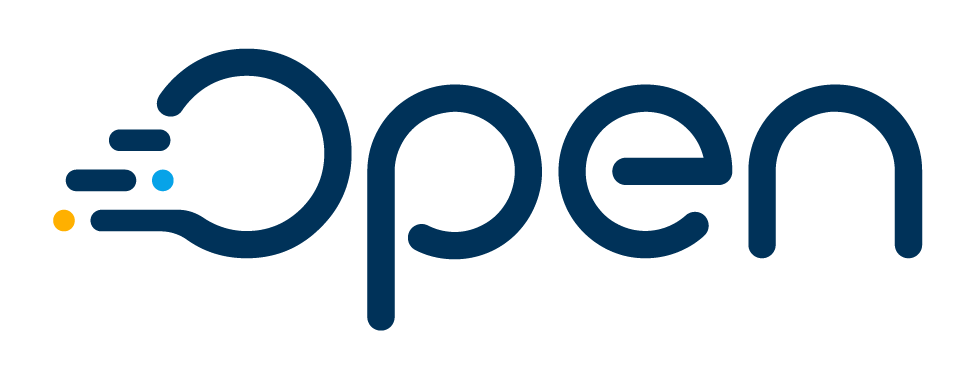Water utility companies are facing intense pressure today from both internal and external factors. Regulations related to resource conservation are getting stricter, consumers are increasingly more conscious about conservation and utility companies are expected to become increasingly efficient.
Because of this pressure, water utilities must change the way they operate and seek new solutions to optimize their operations. A key driver of operational efficiency is the reduction of non-revenue water (NRW), as it is a problem which reduces revenue and increases operating expenses. NRW represents wasted water and energy, making it a clear sustainability issue; however, it is also a reputation issue because NRW is a universally recognized performance measure for utilities. Inefficient systems, inaccurate measurements, flawed data, and sub-standard policies, must give way to a new era of transparency, accuracy and sound economic analysis.
Companies that do not implement an effective NRW strategy are at risk of entering a vicious cycle– as higher NRW levels drive up both capital and operational expenditure, further limiting the available budget for controlling NRW. Conversely, when a company is successful in executing an effective NRW strategy, the reduction in NRW levels leads to lower costs and higher revenues, facilitating the deferral of capital investments and freeing up additional resources for further investment in NRW management.
Despite its clear benefits, there are numerous challenges to implementing a successful NRW program. Strategies are often hindered by a lack of accurate information, or they may focus too narrowly on one factor of NRW instead of addressing the full range of issues. In short, NRW reduction programs can be costly, difficult and risky; so it is important to plan carefully before taking action.
An essential first step towards designing a good NRW strategy is understanding the right performance metrics to use. A commonly used metric is water loss as a percentage of total water volume; this is valid as a general reference point, however, it should not be used as a performance indicator because of the influence of variable consumer demand. Two better performance indicators for measuring improvements in efficiency are real losses and apparent losses(1), both expressed in gallons per service connection per day. Another key consideration for designing an NRW strategy is to ensure that there is a clear understanding of the causes behind the NRW levels. Many utilities assume that most NRW comes from leaks and inaccurate metering; hence the default strategy may be to replace equipment, only to realize later that the equipment in question was not the source of the problem. Costly mistakes can be avoided by analyzing past NRW-reduction techniques in order to determine which initiatives have been ineffective and which have had a significant impact.
Once a company has a solid understanding of the causes of their NRW, has determined the right metrics to use and has learned what they can from past actions, they are ready to start designing an optimized NRW strategy tailored to their specific situation. Both AWWA and EPA recommend a three-step process for managing NRW: auditing, intervention, and evaluation. This process ensures utilities can determine their baseline water use and loss, prioritize the most effective initiatives, define the necessary operational changes and then measure the results with a focus on continual improvement.
The audit step involves assessing the distribution, metering and accounting operations of the water utility to determine how much water is being lost and where. Throughout the process, it will become clear which areas require closer attention and which loss-control methods should be considered. These options should be compared and evaluated not only economically but also with consideration given to other issues facing the company. Typical steps in an audit include: gathering information, determining water flows, calculating the values of performance indicators, assessing apparent areas of water loss and deciding upon the loss-control initiatives to be implemented.
The Intervention process puts the selected combination of initiatives into action with the goal of improving performance up to the desired target in the most effective way possible. Intervention can include any combination of metering assessment, testing, metering replacement, detection of leaks, the location of leaks, and repair or replacement of pipes.
Finally, an evaluation phase is necessary to ensure that the intervention succeeded in its goal. If the goal of the intervention was not met, the evaluation process seeks to determine why not and what can be done about it.
Because NRW intervention can carry a substantial cost, the challenge for the utility company is to determine the optimal level of investment in their NRW strategy. The trade-off between the value of lost water and the required investment to reduce this loss requires careful economic analysis. Reducing leakage and commercial losses tend to be costly, especially if large sections of piping need to be replaced. Nevertheless, studies have shown that for a given increase in available water, the cost of NRW reduction is 33 to 50 percent less than the cost of expanding supply. In saying this, NRW investment is clearly subject to the effect of diminishing returns, so the cost-benefit analysis is required for each situation to determine the optimal level of losses. Company-specific costs, benefits, and water system engineering parameters must be considered.
Given all these considerations, the key question becomes: What should the loss reduction target be? The overly-aggressive intervention will lead to wasteful spending due to premature replacement of equipment, whereas reactive intervention will not do enough to reduce NRW. The solution is to do a cost-benefit analysis of NRW investment and scale up intervention to the point where the cost is equal to the benefit, as displayed in the graph below.
Decreasing NRW is often cost-effective, but several factors need to be considered when evaluating the cost-benefit analysis within a specific utility company. Financial resources must be allocated upfront for finding and repairing leaks and faulty meters; whereas the benefit of this work will present itself over a payback period. Initiatives aimed at reducing apparent or commercial losses such as meter replacement or updating cadasters tend to have a quicker payback, as they require limited investment and translate immediately into additional revenues. The situation is more complex for physical leakage as the assets involved have a long life-span, the capital investment is greater and the payback is over a longer period. Moreover, fixing every leak or faulty meter is not economically feasible, so utility managers must focus only on repair initiatives where the benefits outweigh the costs, in order to ensure a positive return on investment.

Avoiding capital expenditure is a large factor when considering the optimal NRW level, particularly when the utility is approaching maximum capacity utilization. In this scenario, if NRW reduction can successfully ease the pressure on capacity, large capital expenditure projects such as the construction of new plants can be deferred or even canceled.
According to the American Water Works Association (AWWA), the average value of NRW hovers around $35 per connection per year. For example, a utility with 100,000 connections stands to gain up to $3.5 million in revenue from NRW reduction. Given the complexity of the costs and benefits involved in an NRW strategy, there is no simple rule of thumb for target-setting, as reaching the optimum level of intervention depends on many parameters. As for regulation; there is no comprehensive national regulatory policy that limits the amount of water loss from a public water supply’s distribution system. Most states, however, set limits that fall within the range of 10% to 15% for the maximum acceptable amount of water that is lost or unaccounted for.
Analytic tools are becoming an increasingly important asset for companies looking to minimize their NRW levels. Tools like real-time dashboards, control panels, and interactive reports can efficiently consolidate network-maintenance information and statistical data on historical customer consumption. These tools can be used to enable a statistical oversight of the operation based on industry-recognized models.
Some software solutions provide analytic capabilities, often using AMI technology, that provides technical teams with continuous analysis of NRW indicators. These indicators facilitate timely decision-making while aiding the development and implementation of long-term NRW management strategies.
The key to developing an effective strategy for reducing NRW is to gain a better understanding of its causes and the factors which influence them. Techniques and procedures can then be developed for the specific characteristics of the network in order to mitigate each of the factors in order of priority while striving for an optimal level of investment in NRW management. The first step towards developing a winning NRW strategy is having the right tools in place to perform a precise diagnosis of the factors causing NRW in each company
(1) “Real losses” refers to the amount of water physically lost from the distribution system, including leakage and storage overflows. “Apparent losses” refers to the amount of water that is not properly measured, accounted or paid for; apparent losses can occur for a number of reasons including metering inaccuracies, unauthorized consumption and data handling errors.







